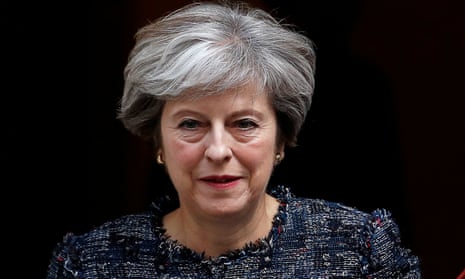Theresa May’s eagerly awaited speech in Florence is seen as the UK government’s third defining statement on Brexit after the prime minister’s Lancaster House speech in January and the white paper that preceded the triggering of article 50 in March.
May must tread a delicate line between offering enough to the 27 EU member states to restart the stalled negotiations (but not so much as to throw away all future leverage) and keeping Brexit hardliners in her cabinet and parliament on board. Here are the key points to watch out for.
The money
The EU27 are adamant that talks cannot move on to discuss the UK’s future trading relationship with the bloc until agreement is reached on the financial settlement, the Irish border and citizens’ rights.
The biggest stumbling block is the divorce bill. The two sides have radically opposing views on how this should be calculated; the UK has even presented legal arguments to show it is not obliged to pay anything at all.
It is thought May will offer to pay enough into the EU to ensure no member state need make extra contributions during the current budget round, which ends in 2020 – a year after the UK leaves. This would amount to about €20bn (£18bn), although she may not mention a figure.
But numbers circulating in Brussels for the final sum the EU27 expect range from €50bn to €100bn. The bloc will want to see a clear signal that Britain will meet its unpaid liabilities for EU projects, and other continuing items such as loan guarantees and EU pensions, extending several years beyond Brexit.
The border and citizens’ rights
The EU has made it clear it it expects Britain to come up with a viable solution for the border between Northern Ireland and the Republic, dismissing London’s plans for a high-tech invisible border and customs waivers as “magical thinking”.
Brussels and EU capitals will want substance here. May must offer more concrete and, above all, more workable proposals and acknowledge that Britain cannot simply wish the problem away.
After a series of alarming Home Office blunders, strong assurances on citizens’ rights would also help. Progress here – notably on the key role of the European court of justice – will be vital in winning over the veto-holding European parliament.
The transition
Beyond the items on the article 50 agenda, May should shed light on the government’s view of the transition period it seems now to agree will be necessary to bridge the gap between exiting the EU in March 2019 and beginning a new trading relationship.
Brexit hardliners, including the foreign secretary, Boris Johnson, want this to be as short as possible. The signs are May will propose a “standstill” transition of up to two years to minimise the shock to business, as promoted by the chancellor, Philip Hammond.
The EU27 will entertain this as long as it is short and maintains the status quo: the UK will have to abide by EU law and the rulings of the ECJ, and by the rules of the single market, including free movement. They will expect the prime minister to state clearly that this is what Britain wants and is prepared to do.
The tone and the future relationship
There are hints that May is preparing to go over the head of the EU’s chief negotiator, Michel Barnier, to appeal to individual EU27 heads of state. She has said, for example, that “the decision will be taken by leaders”.
But member states have given Barnier a clear legal mandate to lead the negotiations, and have neither the time nor the inclination to revisit it. What they would welcome above all from May’s speech would be some realism.
Meaningless calls for “deep and special” relationships and “bespoke deals” will not be well received because that the EU27 are increasingly sure that Britain’s end objective remains a “have-your-cake-and-eat-it” Brexit.
In Barnier’s words, all the UK has said so far points to a “nostalgic and unrealistic” wish to “continue to enjoy the benefits of the single market and EU membership, without actually being part of it”. As he also bluntly said last month: “This is impossible.”
So perhaps the most important signal May could send in Florence is that the UK understands it cannot cherry pick, realises there are rules that cannot be rewritten – and agrees that if it wants more than the benefits of a Canada-style free trade deal, it will have to accept obligations – and a model such as Norway’s or Iceland’s.
It may be time to acknowledge what “Brexit means Brexit” actually means.

Comments (…)
Sign in or create your Guardian account to join the discussion